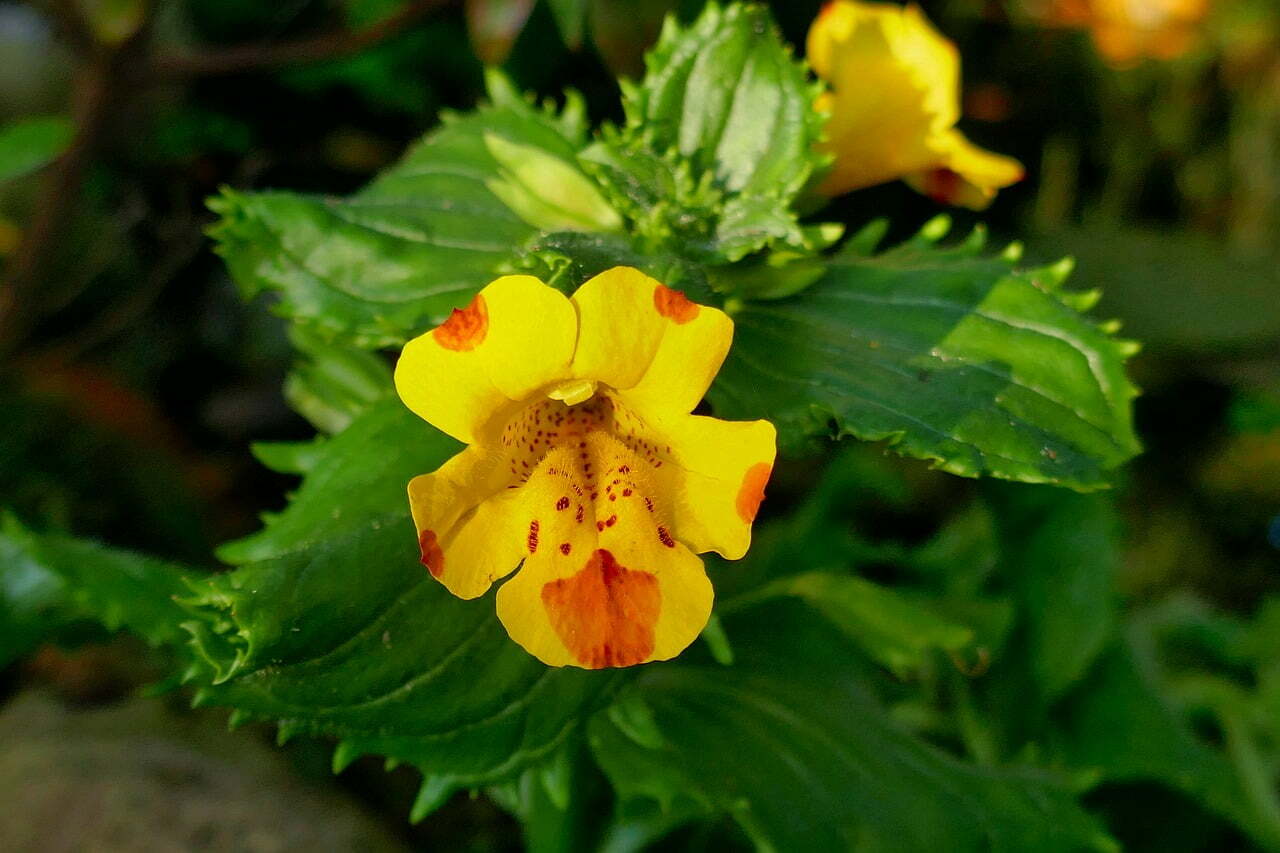
Monkeyflower planting guide
Table of Contents
- Introduction
- What is Monkeyflower?
- Choosing the Right Location
- Preparing the Soil
- Planting Monkeyflowers
- Step 1: Selecting Healthy Plants
- Step 2: Digging the Planting Holes
- Step 3: Proper Spacing
- Step 4: Watering Techniques
- Monkeyflower Care
- Watering
- Fertilizing
- Mulching
- Pruning
- Dealing with Pests and Diseases
- Propagation of Monkeyflowers
- Monkeyflower Varieties to Consider
- Using Monkeyflowers in Landscaping
- Borders and Edges
- Rock Gardens
- Containers
- Wildlife Gardens
- Monkeyflowers as Pollinator Magnets
- Frequently Asked Questions (FAQs)
- Conclusion
Introduction
Monkeyflowers (Mimulus) are delightful flowering plants that add a burst of color and charm to any garden. With their vibrant blossoms and diverse varieties, these lovely plants are a favorite among both novice and experienced gardeners. If you’re looking to enhance your garden with these beautiful blooms, this article will Monkeyflower planting guide in various landscaping settings.
What is Monkeyflower?
Monkeyflower, scientifically known as Mimulus, is a genus of flowering plants that belong to the Phrymaceae family. These plants are native to North America, and some species can also be found in South America and Asia. Monkeyflowers are known for their trumpet-shaped flowers that come in a wide array of colors, including shades of red, orange, yellow, and even pink and white.
Choosing the Right Location
When planning to grow Monkeyflowers, selecting the right location is crucial for their optimal growth and blooming. These plants thrive in areas with partial shade to full sun, making them versatile for different garden settings. Ensure that the chosen spot receives at least 4-6 hours of sunlight daily.
Preparing the Soil
Before planting Monkeyflowers, it’s essential to prepare the soil adequately. These plants prefer moist, well-draining soil with a slightly acidic to neutral pH level. Adding organic matter, such as compost, can improve soil fertility and texture, promoting better root growth.
Planting Monkeyflowers
Step 1: Selecting Healthy Plants
When purchasing Monkeyflowers, opt for healthy plants with lush green foliage and no signs of pests or diseases. Healthy plants have a higher chance of establishing well in their new environment.
Step 2: Digging the Planting Holes
Dig holes in the prepared soil that are slightly larger than the nursery containers of the Monkeyflowers. Gently remove the plants from their containers and place them in the holes, ensuring the top of the root ball is level with the soil surface.
Step 3: Proper Spacing
To allow adequate air circulation and prevent overcrowding, space the Monkeyflowers according to their mature size. Typically, 12 to 18 inches apart is suitable for most varieties.
Step 4: Watering Techniques
After planting, water the Monkeyflowers thoroughly to help them establish their roots. Keep the soil consistently moist during the growing season, especially in hot weather.
Monkeyflower Care
Caring for Monkeyflowers is relatively straightforward, but it requires attention to their specific needs. Follow these care tips to ensure your plants flourish:
Watering
Monkeyflowers prefer regular watering, especially during dry spells. However, they don’t tolerate waterlogged soil, so ensure proper drainage.
Fertilizing
Apply a balanced, slow-release fertilizer during the growing season to provide essential nutrients for healthy growth and flowering.
Mulching
Mulching around Monkeyflowers helps retain soil moisture, suppresses weeds, and maintains a more stable soil temperature.
Pruning
Deadhead spent flowers to encourage continuous blooming and trim back leggy growth to promote bushier plants.
Dealing with Pests and Diseases
Inspect your Monkeyflowers regularly for signs of pests or diseases. Common issues include aphids and powdery mildew, which can be treated with appropriate measures.
Propagation of Monkeyflowers
Monkeyflowers can be propagated through seeds or cuttings. Collect seeds from mature plants and sow them in well-prepared soil during the spring. Cuttings can be taken from healthy stems and rooted in a suitable growing medium.
Monkeyflower Varieties to Consider
There are numerous Monkeyflower varieties to choose from, each offering unique colors and characteristics. Some popular options include:
- Mimulus cardinalis (Scarlet Monkeyflower)
- Mimulus guttatus (Yellow Monkeyflower)
- Mimulus lewisii (Purple Monkeyflower)
- Mimulus aurantiacus (Sticky Monkeyflower)
Using Monkeyflowers in Landscaping
Monkeyflowers are versatile plants that can be incorporated into various landscaping designs:
Borders and Edges
Plant Monkeyflowers along garden borders or walkways to add vibrant pops of color and create a welcoming atmosphere.
Rock Gardens
Their small size and attractive blooms make Monkeyflowers perfect for rock gardens, where they can thrive in well-draining soil.
Containers
Plant Monkeyflowers in containers to decorate patios, balconies, or any small space with their beautiful flowers.
Wildlife Gardens
Monkeyflowers attract bees, butterflies, and hummingbirds, making them an excellent addition to wildlife-friendly gardens.
Monkeyflowers as Pollinator Magnets
Due to their bright colors and nectar-rich flowers, Monkeyflowers act as magnets for various pollinators, contributing to the overall health of the ecosystem.
Conclusion
In conclusion, Monkeyflowers are fantastic additions to any garden, providing stunning blooms and attracting beneficial pollinators. By following the planting and care tips outlined in this guide, you can cultivate a thriving Monkeyflower garden that will delight you and your visitors with its beauty.
Frequently Asked Questions (FAQs)
- Can Monkeyflowers grow in full shade?
Monkeyflowers prefer partial shade to full sun but can tolerate some shade. However, they tend to bloom more prolifically with adequate sunlight. - How often should I water my Monkeyflowers?
Water your Monkeyflowers regularly, aiming for consistently moist soil during the growing season. Adjust the watering frequency based on weather conditions. - Do Monkeyflowers require winter protection?
Some Monkeyflower species are hardy and can withstand mild winter conditions. However, in colder climates, providing mulch or covering the plants during extreme temperatures can offer protection. - Can I grow Monkeyflowers indoors?
While Monkeyflowers are primarily outdoor plants, you can grow them in containers indoors as long as they receive sufficient sunlight. - Are Monkeyflowers deer-resistant?
Yes, Monkeyflowers are known to be deer-resistant, making them a great choice for gardens in areas with deer populations.